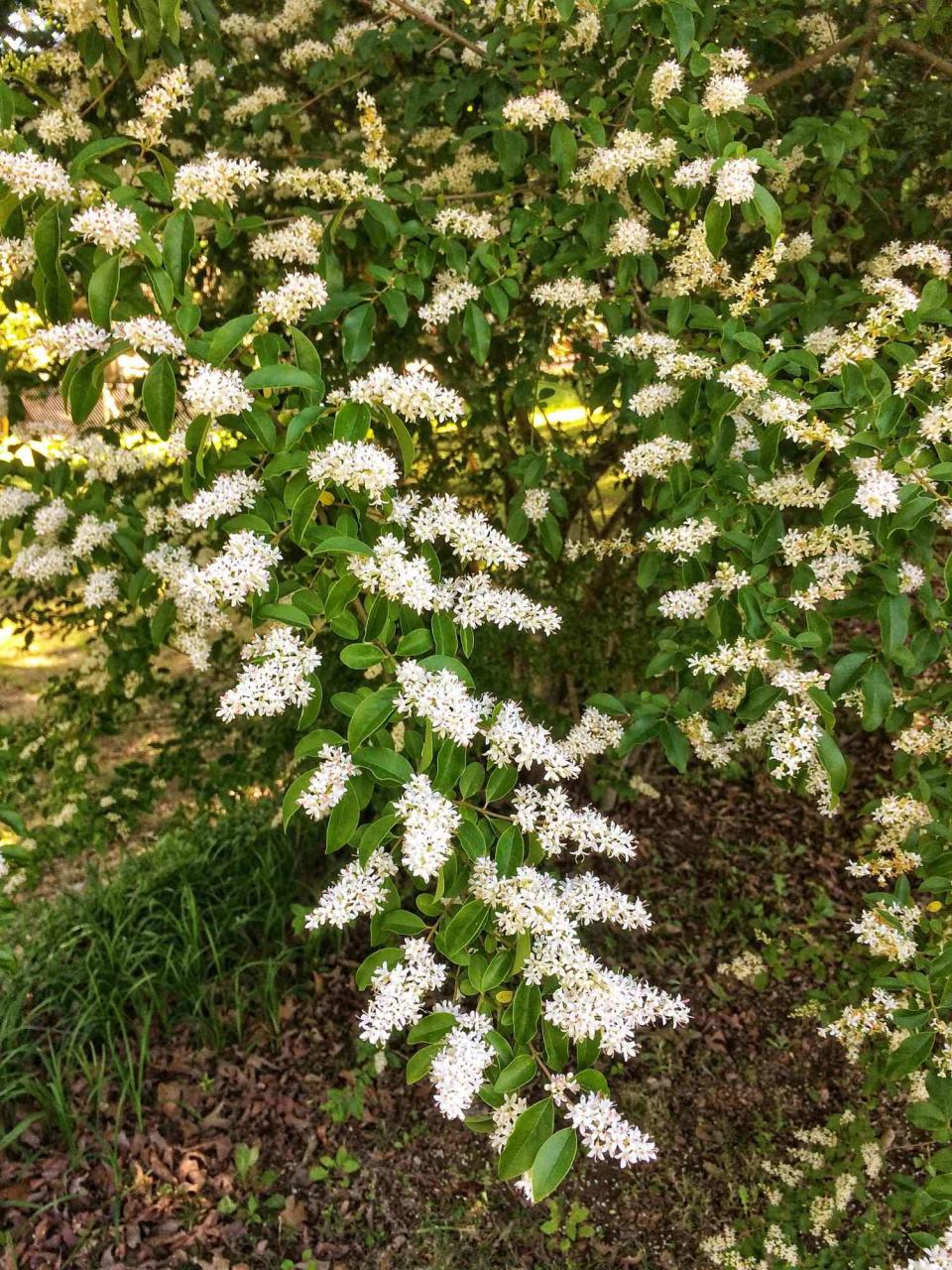Everything You Need To Know About Pretty, Awful Privet
Hold your breath and kill the South's worst weed.

People like their privacy. That's why they put up fences. When they can't afford fences, they plant hedges. And that's how the South's worst weed now plagues millions of acres in Southern states from Maryland to Florida to Texas.
The villain is a large, evergreen shrub or small tree called Chinese privet (Ligustrum sinense). It's worse than kudzu, according to the scientists tracking its spread. Worse than kudzu. That's because kudzu needs sun to grow. Chinese privet, on the other hand, grows just about anywhere. In sun. In shade. In wet soil. In dry soil. In the city. In the country. All over more than 3 million acres of Southern forests and now spreading as far north as Massachusetts.
It entered the South from its native Asia as an ornamental plant in 1852. Nurseries in towns like Birmingham, Atlanta, and Jackson often ignored its true appellation and sold it simply as "hedge." (A fellow I once did a story on named Dr. Dirt calls it "privy hedge," because he always saw it growing next to the privy. I think it's better thrown into a privy than planted next to it.) Thus, infestations of this botanical nightmare are worse around cities and suburbs than in rural areas. For now.
Identifying Chinese Privet
If no image comes to mind when I write "Chinese privet," look at the photo above. You've seen it just about everywhere. Privet has glossy, 1-inch oval leaves that grow opposite each other along arching branches. Its sprays of white flowers, blooming in late spring, are actually quite pretty. You've also smelled it. That sweet odor that seems to permeate the neighborhood? It comes from Chinese privet blossoms.
Something else comes from those blossoms. Pollen. Many people are highly allergic. Later on, the flowers give rise to countless small, bluish-black fruits containing seeds. Privet is in the olive family, but its fruit is toxic to humans. Birds, however, eat the fruits and poop out the seeds all over. Search your yard today and likely as not, you'll find some privet seedlings. Let them be and they'll grow into monsters 20 feet tall and wide, choking out native plants around them. In the woods and on roadsides, they form solid thickets. Hardly anything else grows.
An Alternative to Chinese Privet
You do not need Chinese privet in your garden. We do not need Chinese privet in this country. Native plants and bees will happily come back when it's gone. That is why I urge you to kill it wherever you find it. Plant something better, like Carolina cherry laurel (Prunus caroliniana). It's a small, Southern evergreen tree that grows in full sun or part shade, and it also bears black fruits and white flowers. Carolina cherry laurel can be pruned as a tree or a hedge and is hardy in USDA Zones 7 to 10.
How to Remove Chinese Privet
Privet seedlings and small shrubs should be pulled, taking care not to leave a single root behind. For large privet bushes, the way to do this is to cut off the trunks an inch or so above the soil during the growing season and then immediately paint the cut surfaces with Roundup or Brush Killer. (Note to anyone worried about the environment—don't even bother to reproach me about this use of Roundup. If you cut your trunks without applying an herbicide, the experts say the roots will just sprout again and result in even more privet. And that's bad for native plants and for wildlife.) Follow label directions carefully. The herbicide will be taken down to the roots and kill them.
Frequently Asked Questions
Is privet an invasive plant?
According to the USDA, privet is a highly invasive species in the South. Privet in Alabama, Georgia, North Carolina, and Florida is considered an intrusive threat.
What is the lifespan of a privet?
Privet trees and hedges have a long lifespan, ranging from 20 to 40 years. These fast-growing plants are adaptable to most situations and need regular pruning to avoid becoming invasive.
For more Southern Living news, make sure to sign up for our newsletter!
Read the original article on Southern Living.

